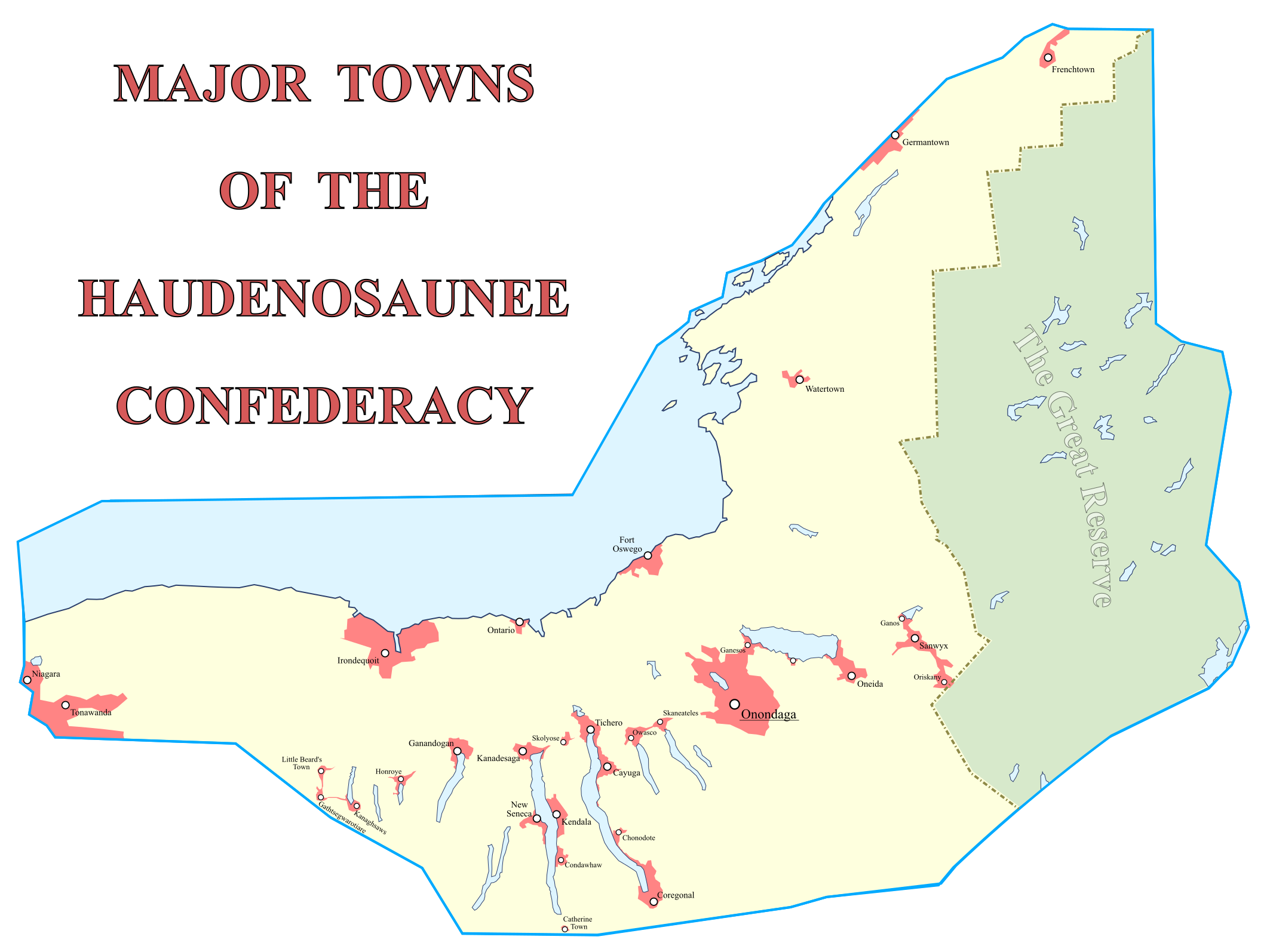HOME | DD
 OzzysMapCorner — UAR - Haudenosaunee Confederacy c.2020
OzzysMapCorner — UAR - Haudenosaunee Confederacy c.2020

Published: 2019-10-30 02:35:10 +0000 UTC; Views: 966; Favourites: 19; Downloads: 0
Redirect to original
Description
The Haudenosaunee Confederacy is one of 37 constituent realms in the Union of American Realms, and one of the four native confederacies. The confederacy's existence predates the Union by 648 years, making it the oldest realm in the nation. Isaac Fox's political writings of the mid-18th century which inspired the colonists to rebel drew inspiration from various historical sources; the Haudenosaunee included. When the War of Independence came, the confederacy made the decisive decision to side with the colonists in exchange for assurances that autonomy would be respected from the Continental Congress. The alliance helped the war effort considerably, and the confederacy played a crucial role in liberating the northern colonies. On March 26, 1790, the Confederacy came to an agreement on a permanent border and ratified the Constitution of the Union, making it one of the original 18 realms. The Constitution of the Union assured greater autonomy to the Haudenosaunee than to any other realm, including the right to restrict migration into the realm from other parts of the Union.The confederacy and its neighbors struggled to get along initially. From the start, New York pressed on the confederacy to allow the construction of a canal connecting Lake Erie to the Hudson, but the confederacy refused. The resulting undeclared Erie Conflict (1813-1815) ensued, a period of extreme hostility between New York and the Haudenosaunee Confederacy. The hostility coincided with the first three years of Lord-Governor DeWitt Clinton's term, and the issue of the canal had reached a boiling point as part of his campaign for the position in 1812. Though the period was marked by a number of border skirmishes, the worst of these was the Coregonal Massacre of late 1814 when New York citizens and militias razed the town of Coregonal killing over 300 individuals. Haudenosaunee immediately petitioned the Council of Executives - the only Confederal body it was represented in - but DeWitt had great sway in that body. It wasn't until King Bushrod's Royal Writings on Liberty in 1815, condemning harshly the atrocities committed by New York against the Haudenosaunee Confederacy, that the Council was moved into action. With public opinion turning against DeWitt, New York ended it's hostility against the Haudenosaunee. The demands made by the Haudenosaunee Confederacy and the response by the monarchy eventually led to the passage of amendments granting all four native confederacies seats in the Confederal Assembly.
The Haudenosaunee Confederacy began loosening its tight immigration restrictions towards the mid-to-late 19th century. Until at least the 1850s, the number of people allowed to settle in the realm from elsewhere in the Union was limited to minuscule numbers. In the late 19th century, perhaps as a response to the immigration easements, the confederacy adopted a policy of promoting the growth of the population. The Growth Period lasted into the 20th century, and although the programs adopted did increase native population in the realm, non-native populations still reached nearly 50% by 1950. The period was also characterized by reforms meant to "modernize" the confederacy, many of which have been criticized in the present day. The programs were relaxed by the mid-20th century, and a period of attempted integration between the native populations and the non-native populations ensued. Today, 63.7% of the confederacy's population consider themselves to be either full native (28.4%) or mixed-native (35.3%) ancestry, while non-native residents account for 36.3% - the largest of the three blocks. Although most of the non-native members of the Haudenosaunee Confederacy are white, some are black as a result of the Haudenosaunee hardline stance against slavery in the 19th century.
The confederacy's capital and largest city is Onondaga. Nearly 50% of the realm's population lives in the Onondaga Metropolitan Area and the successful creation of a tech hub in the city spurred it's growth in recent decades. The majority of the realms' non-native population live in the northern reaches along the Saint Lawrence River, at the southwestern reaches, or in the capital. Roughly 29% of the realm's territory constitutes the Great Reserve, a protected wilderness area with little to no human population. The majority of the land is used for agricultural purposes.
























